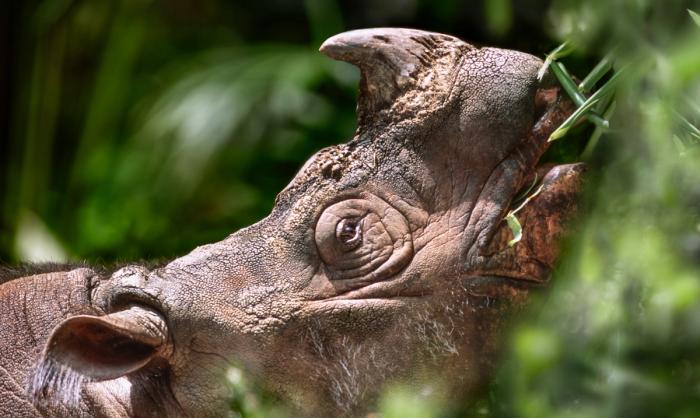
"According to the IUCN (International Union for the Conservation of Nature)there were approximately 200 adult Sumatran rhinos left in the wild on the Malay Peninsula, Borneo, and Sumatra in 2008. Since then, the wild population has declined to fewer than 80 individuals. Today, all of them live in Sumatra and some of them in captivity. The decline is due to intensive hunting in the early 1900s, causing the number of animals to drop dramatically. This resulted in the creation of a long distance between the remaining animals, who then never met, and therefore, rarely had cubs. In Sumatra, the last two populations now live at opposite ends of the island. Therefore, they cannot mate and thus mix the genes, which is necessary for the species to survive in the long term. Sumatran rhinos have an important function in keeping rainforests healthy as they eat the prudish pioneer plants such as lianas, which grow quickly and suffocate slow-growing rainforest trees."
"It is imperative that humans provide active assistance if the Sumatran rhino is to survive into the future. The species lives in dense rainforests, so the only solution is to capture rhinos from different populations and put them together so they can mate. The species continues to decline rapidly, so it's a race against time. Female rhinos usually only give birth to 3-4 cubs throughout their lives, so each individual counts. However, we have the solution to make a difference, and there are even good conditions for releasing the species into the wild, but action is required NOW and very quickly."
Rasmus Worsøe Havmøller, Postdoc - Science & Society, Natural History Museum of Denmark and Ph.D. in biodiversity from Copenhagen University.